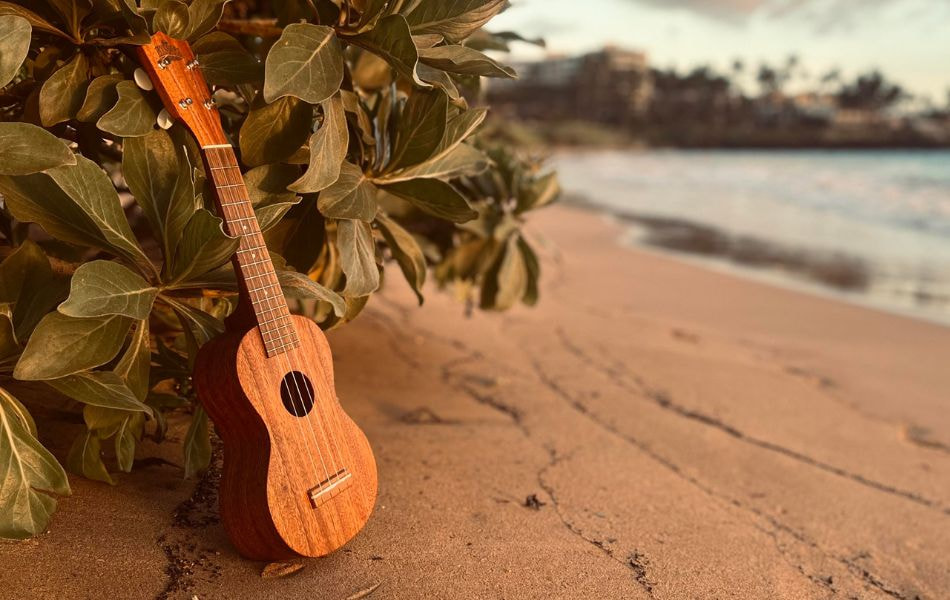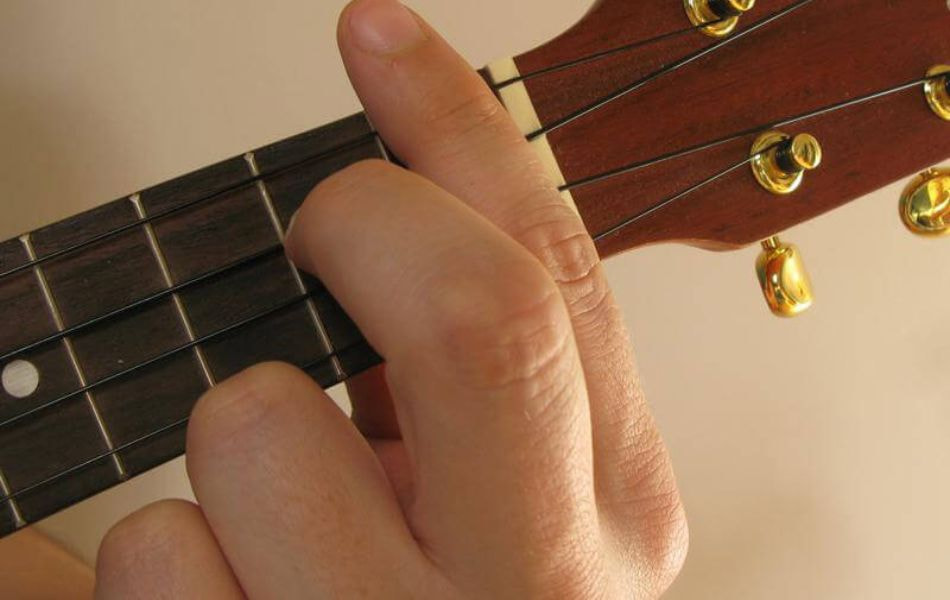How To Play D7 Chord Guitar
7th chords are like secret keys to unlock richer, more captivating melodies in your music. Among these enchanting chords, D7 chord guitar holds a special place. Today, we embark on a journey to explore the world of D7 chord variations. We'll begin with the familiar, then venture into the lesser-known territory.
What is D7 chord guitar?
The D7 chord guitar is a common open chord that consists of several notes played simultaneously to create a harmonious sound. To play the D7 chord on the guitar, follow these steps:
- Start with the standard E A D G B E guitar tuning.
- Place your index finger on the second fret of the G string (the third string from the bottom).
- Place your middle finger on the second fret of the high E string (the first string).
- Leave the A, D, and B strings (the fifth, fourth, and second strings, respectively) open, meaning you don't press them down on any fret.
- Avoid strumming the low E string (the sixth string) to prevent it from sounding in the chord.
When you strum the D7 chord, make sure you hit only the strings you have your fingers on (G and high E strings) along with the open strings (A, D, and B). This combination creates the distinctive D7 sound.
D7 is a versatile chord used in many songs, and mastering it is essential for guitar players. It adds a bluesy and jazzy flavor to your chord progressions and can be incorporated into various musical styles.
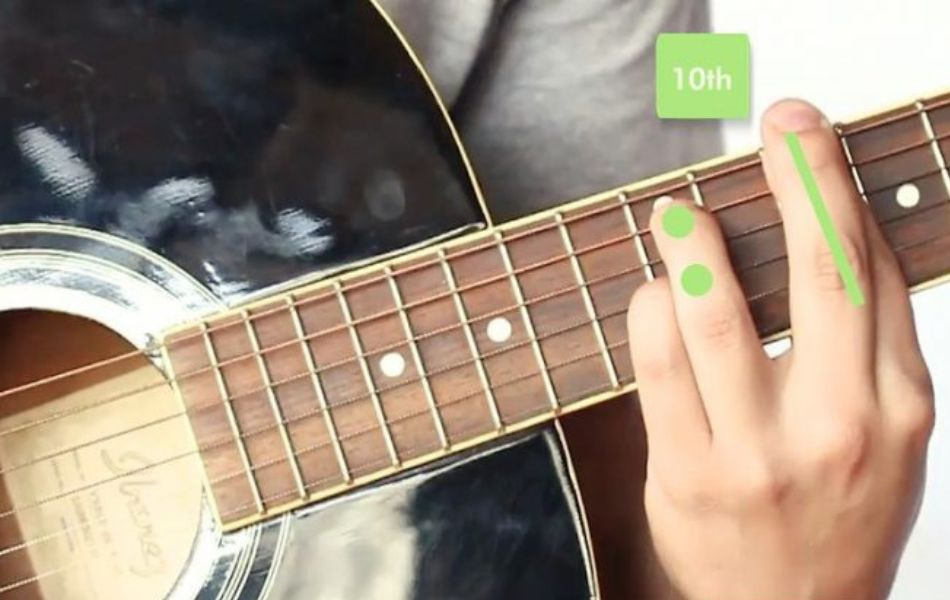
How many D7 chord guitar
D7sus4
This chord is a variation of the D7 chord on the guitar. Specifically, it's a D7sus4 chord, with the addition of the F# note (the 4th note) to the traditional D7 chord. This creates a unique sound and is often used to add richness and creativity to music.
- Your index finger (1) on the C note of the B string at the 1st fret.
- Place your middle finger (2) on the A note of the G string at the 2nd fret.
- Place your ring finger (3) on the F# note of the high E string at the 2nd fret.
- Play the D string open.
- Mute the top 2 strings.
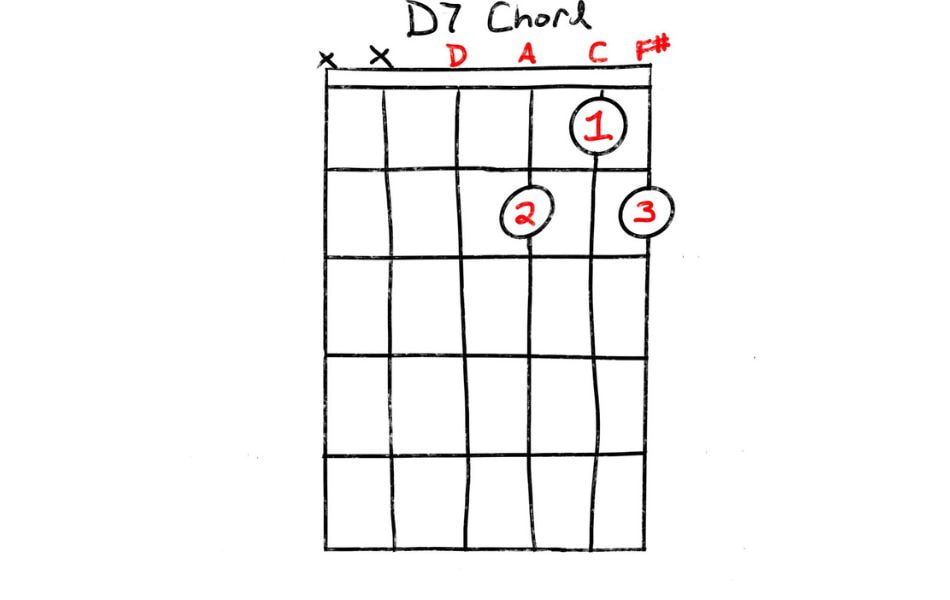
D7 Open Chord (Standard)
The D7 Open Chord (D dominant 7th open chord) on the guitar is a chord played in the open position and is commonly used in music. Here is how to position your fingers to play the D7 Open Chord:
- Place your pinky finger on the G string (1st string, counting from the bottom) at the 2nd fret.
- Keep the other fingers free to play the remaining strings without pressing them down.
- This chord produces the sound of D7 on the guitar and is often used in many songs, especially in blues and folk music.
D7 Barre Chord
A D7 Barre Chord on the guitar is a chord that is played by using a barre (a finger pressing down multiple strings) to fret the notes across the fretboard. Here's how to play a D7 Barre Chord:
- Place your index finger (barre) flat across all the strings at a particular fret. In this case, let's say you're barring at the 2nd fret.
- Position your middle finger on the 3rd fret of the A string (5th string).
- Place your ring finger on the 5th fret of the D string (4th string).
- Your pinky finger should go on the 5th fret of the B string (2nd string).
- Ensure that the barre with your index finger covers all the strings on the 2nd fret.
Strum all the strings from the A string (5th string) to the high E string (1st string) with your barre pressing down on the 2nd fret. This creates the D7 Barre Chord.
This chord shape can be moved up and down the fretboard to play different chords, depending on where you place the barre. The specific placement mentioned here results in a D7 chord guitar.
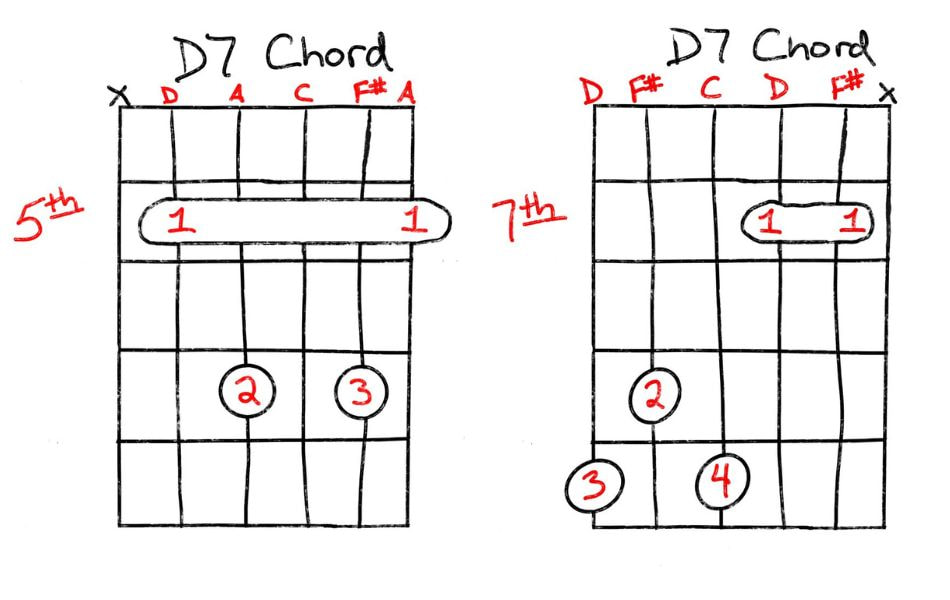
The difference between D7 chord and D major
The D7 chord and the D major chord are similar but have a crucial difference: the D7 chord includes a flattened 7th note in the chord structure, while the D major chord does not.
D Major Chord (D)
Notes: D, F#, A
The D major chord consists of the root note D, the major third note F#, and the perfect fifth note A.
It creates a bright, happy, and consonant sound and is often used in more upbeat and positive musical contexts.
D7 Chord (D Dominant 7th)
Notes: D, F#, A, C
The D7 chord, on the other hand, includes the root note D, the major third note F#, the perfect fifth note A, and the flattened seventh note C. The addition of the flattened seventh note (C) gives the D7 chord a bluesy, jazzy, or more tension-filled sound compared to the D major chord.
It's commonly used in blues, jazz, and other genres where a bit of dissonance or tension is desired.
In summary, the main difference between these two chords is the inclusion of the flattened seventh note (C) in the D7 chord, which adds a different tonal flavor and makes it suitable for different musical contexts than the D major chord.
In conclusion, learning how to play the D7 chord guitar is a valuable skill for any guitarist. Whether you're a beginner or an experienced player, the D7 chord can add depth and richness to your music.

